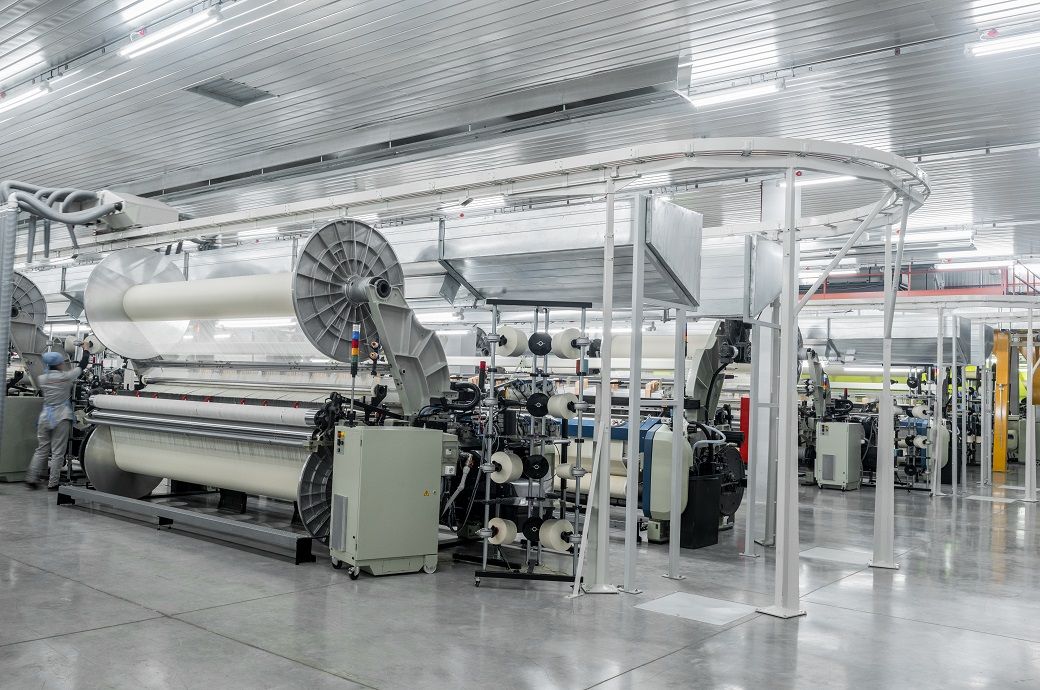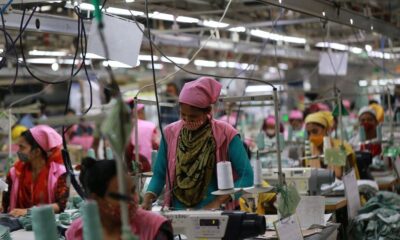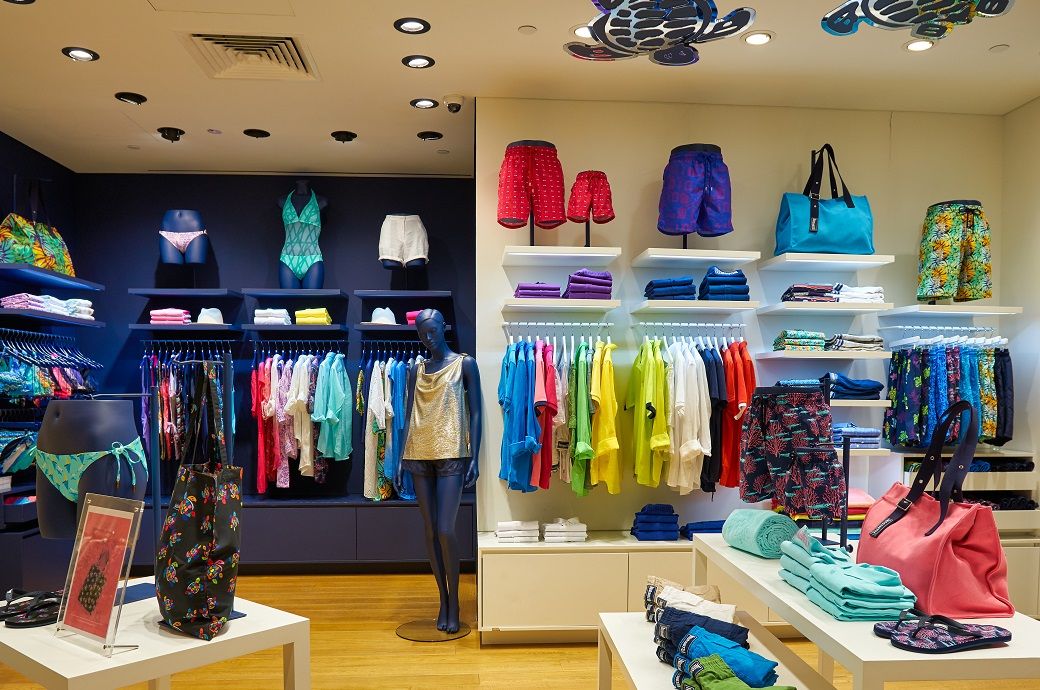Fashion
A distinctly eclectic Paris Fashion Week featuring Leonard, Giambattista Valli, and Vetements

Published
October 4, 2025
Paris Fashion Week entered its fifth day with an especially intense programme. In particular, the womenswear ready-to-wear shows for Spring/Summer 2026 revealed designers’ pursuit of freshness and lightness. Leonard Paris and Giambattista Valli were prime examples. Vetements, for its part, opted for provocation.
Leonard Paris jetted off to California, channelling Hollywood and Beverly Hills, for a festive summer that promises to be scorching. The wardrobe conceived by German designer Georg Lux leaned into evening and cocktail dressing, with fluid minidresses and long, diaphanous gowns cut from airy silks. The pieces floated, at times seeming suspended, rippling with each step in a whisper of intangible fabrics.
“I was inspired this season by muses such as Faye Dunaway and Jerry Hall, but also by the drawings of Puerto Rican fashion illustrator Antonio Lopez,” confided the creative director backstage, who welcomed guests to the elegant private mansion in the 16th arrondissement, where the house has been based since 2018. Clearly, his collection looked as much to the seventies jet set as to Hollywood’s golden age, with draped, diva-worthy, sequinned gowns.
More than ever, prints took centre stage, from Californian palms lifted from the house’s 1980s archives to the Art Deco floral theme developed by Leonard during the 1970s, along with a new red-and-orange poppy motif found on cotton-poplin dresses, but also painted onto a jacket and a transparent recycled-plastic bag, or worked into enamelled metal earrings. And flowers of every shape and in every shade ran through this richly varied collection.
Next summer’s wardrobe is all about volume, with draping, generous balloon sleeves, puffed silhouettes and flared dresses. A few “cricket club”-style striped looks and masculine blazers and suits provide contrast, though they remained thoroughly glamorous, crafted in greige twill embroidered with gold sequins and rhinestones.
Giambattista Valli welcomed guests into the salons of his house, a stone’s throw from the Opéra on Boulevard des Capucines. Baskets brimming with fruit and wildflowers lined the catwalk. The tone was set, as the Italian couturier celebrated nature in all its splendour, infusing his collection with an ingenuous candour.
With their colourful headscarves, blouses and ample petticoats or culottes, or their white lace apron dresses, the models evoked peasant women returning from the fields, or shepherdesses from old tales in search of Prince Charming. Some outfits were strewn with bucolic motifs: flowers, bouquets, fruit, clovers and butterflies.
Natural materials such as linen and cotton dominated, bringing a touch of authentic simplicity to the whole via little dresses, jackets and shorts suits decorated with hand-painted flowers in the manner of Dutch masters such as Vermeer, whose still lifes inspired Giambattista Valli this season.
Ruffles multiplied like petals in delicate dresses with billowing, airy volumes. They come in the colours of summer fruits: peach, raspberry, lemon, cherry, strawberry and plum. Lightness prevailed with shot taffeta and, above all, organza—whether embroidered cotton organza, ruched silk organza or crinkled iterations.
After taking over a McDonald’s on the Champs-Elysées in June 2019, Vetements returned to show on the world’s most beautiful avenue, this time taking over a concrete basement formerly occupied by an Adidas store. In the dim light, a silhouette descended the stairs to cross what looked like a squalid garage, its ceiling interlaced with neon tubes. Face masked by a nylon stocking, the first model appeared in leather trousers and boots, wearing a white T-shirt with a swastika crossed out by a prohibition sign.
For its return to the catwalks after sitting out last season, the brand is looking to make an impact. But its message was, to say the least, muddled. After this opening manifesto look, what followed was a sexist show in which all the women who stepped onto the catwalk were systematically undressed at the back, while the men were not subjected to the same treatment—save for one model whose jeans turned into transparent plastic at the rear, revealing a very chaste pair of white boxer shorts.
Fashion has often explored front/back construction in clothing, but here the experimentation left observers unconvinced. Whether in slip dresses or a tight skirt with a T-shirt, a suit, a printed dress, a severe straight grey skirt, or even a candy-pink ballgown, seen from behind the women were reduced to mere sex bombs, buttocks and legs on full display, covered only in couture tights and sometimes tight shorts or thigh-high boots.
At the back, in fact, garments morphed into high-cut bodysuits, while long dresses were shortened and skirts were either merely tacked at the front without being properly worn, or systematically unbuttoned at the back. Even the classic tweed suit was subverted, the skirt replaced by a pair of tweed briefs—also, of course, high-cut. Elsewhere, trench coats and overcoats open at the back or are stripped of fabric, revealing the lining, as with certain jackets worn by the men.
Two looks, strapped with an enormous cushion—airbag-style—fixed to the front at pelvis level, prompted questions. At the end of the show, coup de théâtre. A final model, dressed in an elegant black crinoline gown entirely open at the back, crossed the catwalk in tears, seeming to buckle under the pain. What was the message here? That this was, in fact, a denunciation of women as objects and of their hypersexualised image? Of the excesses of social media?
By trying too hard to conceptualise, Guram Gvasalia, who took over as the brand’s creative director in 2021 (he succeeded his brother Demna, who left for Balenciaga and is now at the helm of Gucci), risks losing his way.
This article is an automatic translation.
Click here to read the original article.
Copyright © 2025 FashionNetwork.com All rights reserved.
Fashion
Germany’s swimwear trade: Asia-Pacific leads volume, Europe tops value
Fashion
EU, OECD partners pledge more transparency on export finance in energy

The EU’s commitment is part of its continued efforts to advance transparency, accountability and informed policymaking in support of the global energy transition.
The EU, Australia, Norway, Switzerland and the UK have committed to transparency on the export credits they provide in the energy sector.
This is part of EU’s efforts to advance transparency, accountability and informed policymaking backing energy transition.
They have requested the Export Finance for Future to report on all their transactions within the scope of the Arrangement on Export Credits.
“We intend to be transparent on the officially supported export credits we provide to transactions in the energy sector. This sector is vital for all economies and public export credits play an important role worldwide, by creating access to reliable, affordable and sustainable energy,” the EU agreed together with Australia, Norway, Switzerland and the United Kingdom.
“We have therefore requested the Export Finance for Future (E3F) coalition to report on all our related transactions within the scope of the Arrangement on Export Credits, with a breakdown by type of energy,” they said.
The E3F report lays out all relevant transactions notified to the OECD secretariat between 2015 and 2024 and shows a clear phase down of fossil fuel support, with in parallel a huge scale-up of renewable energy financing. Transactions are broken down by year, recipient country and energy sector. The intention is to report annually from now on, an official release from the EU said.
The EU participates in the OECD-hosted Arrangement on Officially Supported Export Credits, which seeks to foster a level playing field for this type of government-provided financial instrument. Climate-related provisions within the arrangement have been expanding since 2015, creating financial incentives for climate-friendly export credits and banning the financing of coal-fired power plants.
Launched in 2021, the E3F is a coalition of export credit agencies is committed to aligning their export finance policies with climate objectives by increasing support for sustainable projects, phasing out public finance for unabated fossil fuels, and publishing an annual transparency report on their export-finance transactions.
In 2024, the EU proposed to create a ‘coalition of the willing’ transparency exercise for the voluntary disclosure of energy-related transactions.
Fibre2Fashion News Desk (DS)
Fashion
India’s Industrial output rises 4% as economy shows strong resilience

Dun & Bradstreet estimates IIP growth to have moderated to 3.5 per cent in October compared with 4 per cent in September and 4.1 per cent in August due to weaker non-durable consumer output, inventory overhang, and subdued external demand. Even so, the combination of strong domestic demand, prudent monetary policy, and rising trade diversification continues to shield the Indian economy from global turbulence.
India’s economy remains resilient, with IIP up 4 per cent in September 2025 despite global slowdown pressures, according to Dun & Bradstreet.
It expects moderation to 3.5 per cent in October, while inflation eases sharply, with CPI projected at 0.6 per cent and WPI turning negative.
Firm domestic demand, rising gold reserves, and stronger external inflows continue to support India’s growth outlook.
CPI inflation eased sharply to 1.5 per cent in September—its lowest level since June 2017—and is projected to fall further to 0.6 per cent in October, driven by subdued food prices and GST rationalisation effects. WPI inflation is estimated to turn negative at minus 1 per cent in October, from 0.1 per cent in September and 0.5 per cent in August. These indicators, also highlighted in the table, point to cooling input costs and improving purchasing power. While this may support short-term demand, Dun & Bradstreet notes that post-festive normalisation and muted wholesale pricing power may lead businesses to adjust production and delay restocking, Dun & Bradstreet said in a press release.
Financial conditions remained broadly stable. The 10-year G-Sec yield is estimated to have eased to 6.5 per cent in October, while the 91-day T-Bill yield held steady at 5.5 per cent for the third straight month. The repo rate remained unchanged at 5.5 per cent as the RBI kept a neutral stance, citing resilient growth and subdued inflation. Liquidity fluctuated due to festive and GST outflows, prompting the central bank to conduct multiple repo and reverse repo auctions. Bank credit growth is estimated to moderate to 9.8 per cent in October from 10.4 per cent in September. These trends are captured in the table, which shows steady short-term yields and modest credit softening.
India’s external buffers strengthened further, particularly gold reserves. The RBI’s gold holdings stood at $97.5 billion at the end of September, accounting for 13.9 per cent of total forex reserves—the highest share in more than two decades. The RBI also declared a record redemption price of ₹12,704 per unit for Sovereign Gold Bonds issued in 2020, reflecting the rise in global gold prices. The rupee averaged ₹88.6 per USD in October, with expectations of mild appreciation to ₹88 in November, consistent with the table’s exchange rate forecasts.
India’s external sector displayed resilience alongside emerging pressures. The central bank’s amendment to the Foreign Exchange Management Regulations now permits rupee-denominated lending to Sri Lanka, Nepal, and Bhutan, promoting greater regional financial integration. India drew foreign investment inflows of $7.3 billion in Q1 FY26, comprising $2.5 billion in FII inflows and $1.6 billion in portfolio investment, reflecting global investor confidence in India’s economic fundamentals.
“India’s economic trajectory continues to defy global headwinds, anchored by resilient domestic fundamentals and a benign inflation outlook. Industrial output remains robust, though signs of post-festive normalisation and inventory adjustments suggest a near-term moderation,” said Arun Singh, global chief economist, Dun & Bradstreet.
“The RBI’s neutral stance and stable yields reflect confidence in macroeconomic stability, while strategic trade diversification and rising gold reserves underscore India’s proactive positioning as a resilient and forward-looking economy amid global uncertainty. As advanced economies grapple with fiscal fragility, India’s calibrated policy mix and expanding external partnerships offer a compelling narrative of resilience and opportunity in a fragmented global landscape,” added Singh.
Fibre2Fashion News Desk (SG)
-

 Tech1 week ago
Tech1 week agoFrom waste to asset: Turning ethanol production CO₂ into jet fuel
-

 Tech4 days ago
Tech4 days agoNew carbon capture method uses water and pressure to remove CO₂ from emissions at half current costs
-

 Politics5 days ago
Politics5 days agoBritish-Pakistani honoured for transforming UK halal meat industry
-

 Sports3 days ago
Sports3 days agoTexas A&M officer scolds South Carolina wide receiver after touchdown; department speaks out
-

 Business4 days ago
Business4 days agoThese 9 Common Money Mistakes Are Eating Your Income
-

 Tech1 week ago
Tech1 week agoSecurity flaws in portable genetic sequencers risk leaking private DNA data
-

 Business4 days ago
Business4 days agoWhat’s behind Rachel Reeves’s hokey cokey on income tax rises?
-

 Fashion1 week ago
Fashion1 week agoBangladesh garment makers eye $5 bn more in exports post policy tweak




















